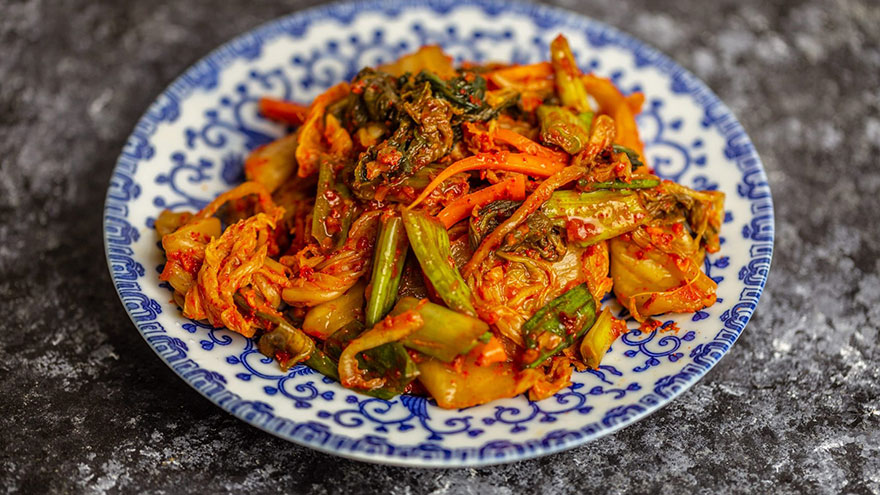How to Make Kimchi
Making kimchi at home does not require any particular skill, but patience is the secret to recreating the complex, tangy condiment that is consumed with a passion across its native South Korea.
While there are hundreds of different types of kimchi, nearly all start with napa cabbage, harvested in late fall and pickled to preserve it over winter. The simplest version calls for basic brining in simple spices, while the authentic version merits its status as an acquired taste through the use of fermented fish sauce and chili.

Brining
Although brining will kill off any harmful bacteria, wash the cabbage first under cold running water to get out any dirt, then shred it on a chopping board with a sharp knife, removing the fibrous core and tougher leaf spine. Brining begins the fermentation process by converting sugars to lactic acid, but only iodine-free salt such as Kosher or sea salt will do the trick, as iodine kills off the bacteria required for fermentation.
Soak the shredded cabbage in a brine solution, 1 part salt to 5 parts non-chlorinated water, with the cabbage weighed down with a heavy plate to keep it immersed. Two hours’ brining should be enough to turn the leaves limp and slightly translucent, but some cooks prefer overnight brining in the refrigerator for a saltier version.
Seasoning
The difference between sweet, spicy kimchi and sour pickled cabbages such as sauerkraut is the powerful seasoning mix that gives it the Asian character. The simplest kimchi out of hundreds of versions requires cabbage, scallions and radish, seasoned with a paste of red pepper flakes, garlic and ginger.
A dash of fish sauce or shrimp paste gives it a pleasant mouthfeel but also a strong aroma that some find off-putting. For a vegetarian version, substitute kelp powder fir shrimp paste or fish sauce. Place the seasoning ingredients in a blender and pulse until you have a smooth paste. This is the time to establish the fieriness of the kimchi by experimenting with different amounts of chili.
Packing
Once the brined cabbage leave sections are supple enough to fold over on themselves without any resistance, drain the brine through a colander and rinse the cabbage thoroughly under cold running water.
Pat the leaves dry with paper towels and then transfer the cabbage to a bowl and mix with shredded radish and scallions. Add the seasoning paste and massage it into the shredded vegetables with your hands until it is thoroughly integrated. Some cooks prefer to wear kitchen gloves as the salt and spice will irritate sensitive skin and carries a lingering odor.
Fermenting
Spoon the seasoned kimchi into a glass jar, packing it tight so that the residual liquid rises to cover the top, but leave some room free at the top of the jar. Close the lid and allow the kimchi to ferment at room temperature. While it is possible to make a so-called quick kimchi with just overnight fermentation, the distinctive tangy flavors do not truly reveal themselves until the 15- to 20-day mark. Whatever the fermentation period, keep pressing the vegetables down in the jar to keep them submerged.
Taste the kimchi regularly and once you have the required balance of flavors, transfer the jar to the refrigerator. Bear in mind that garlic will turn bitter as it ferments and ginger can turn gluey, so do not overdo it with these when seasoning.
You Might Also Like :: Thai Barbeque Ribs Recipe
